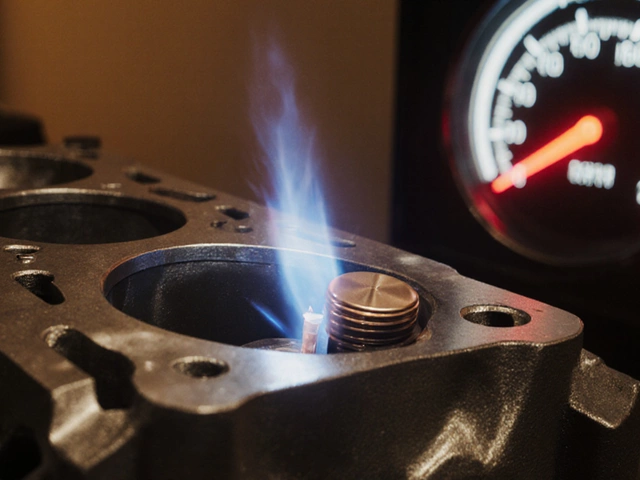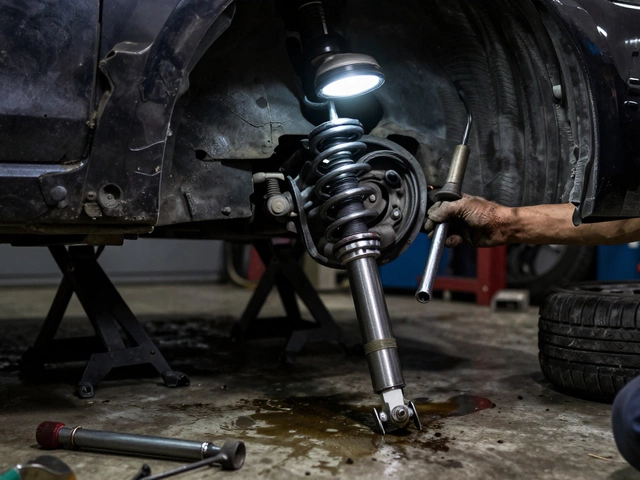How Long Do Spark Plugs Last? The Facts Every Driver Should Know
Most people think spark plugs are set‑and‑forget parts, but they wear out like any other piece of hardware. Knowing the typical lifespan helps you plan ahead and stop the car from coughing or losing power at the worst moment.
What Determines Spark Plug Life?
Several things decide how many miles you get out of a plug. The most obvious is the type of plug you use – copper plugs tend to last 20‑30 k miles, while iridium or platinum ones can push 60‑100 k miles. Your driving style matters too. Hard acceleration, frequent short trips, and a lot of stop‑and‑go put extra heat on the plug tip, shaving off years.
Engine design plays a role. Modern engines run hotter and at higher pressures, so they demand plugs that can handle more stress. On the flip side, older engines with lower compression may be kinder to budget‑grade plugs. Finally, fuel quality can speed up wear. Low‑octane or contaminated fuel creates deposits that foul the plug tip faster.
Signs Your Spark Plugs Need Replacing
Don’t wait for the check‑engine light to flash. Rough idling, misfires under acceleration, and a noticeable drop in fuel economy are classic clues. If you hear a pinging sound during a hard throttle, that’s a sign the spark isn’t firing when it should.
Another tell‑tale is hard starting. If the engine cranks longer than usual before it fires, the plug gap may be too wide or the electrode worn down. A simple visual check – removing a plug and looking at the tip – can confirm it. A clean, white‑grey electrode means it’s still good; black, oily, or cracked tips mean it’s time for new ones.
Most mechanics recommend a plug change every 30 k–50 k miles for copper plugs and every 60 k–100 k miles for iridium or platinum. If you’re unsure, look at your owner’s manual; it usually gives a mileage range based on the factory‑installed plug type.
Skipping a change can cause bigger problems. A failing plug can lead to incomplete combustion, which stresses the catalytic converter and may even damage the engine’s pistons over time. In short, a cheap plug replacement now saves you from expensive repairs later.
When you decide to replace them, it’s a good idea to swap all four (or six) at once. Mixing old and new plugs can create uneven firing and torque loss. The job itself is straightforward with the right tools – a spark plug socket, a torque wrench, and a gap gauge if you need to adjust the new plugs.
If you’re not comfortable doing it yourself, a quick visit to a local garage like Northwich Tyres Centre will get it done in under an hour. They can also check your ignition coils and wires while they’re at it, ensuring everything works together smoothly.
Bottom line: keep an eye on mileage, watch for performance changes, and replace plugs according to the type you use. A little maintenance now means a smoother ride, better fuel mileage, and fewer surprise breakdowns down the road.
 5 May 2025
5 May 2025
Spark Plug Life Expectancy: How Long Do They Really Last?
Curious how long your spark plugs will last? This article breaks down what actually affects a spark plug’s lifespan, how to spot wear before it turns into trouble, and when you should make the swap. Get practical tips and real-life examples from drivers who pushed their limits. Find out what happens if you wait too long, and how to get every mile out of your current set. No jargon—just honest, easy-to-grasp advice.
Latest Posts
-

Do Spark Plugs Add Horsepower? Myths, Facts, and How to Choose the Right One
-

How Do I Know If I Need a New Clutch Kit? Signs, Tips, and What to Do Next
-

Replace Spark Plugs Yourself: A Handy DIY Guide
-

How to Fix a Bad Suspension: Step-by-Step Guide for Safe, Smooth Driving
-

How Long Does a Clutch Kit Last in Your Vehicle?

0